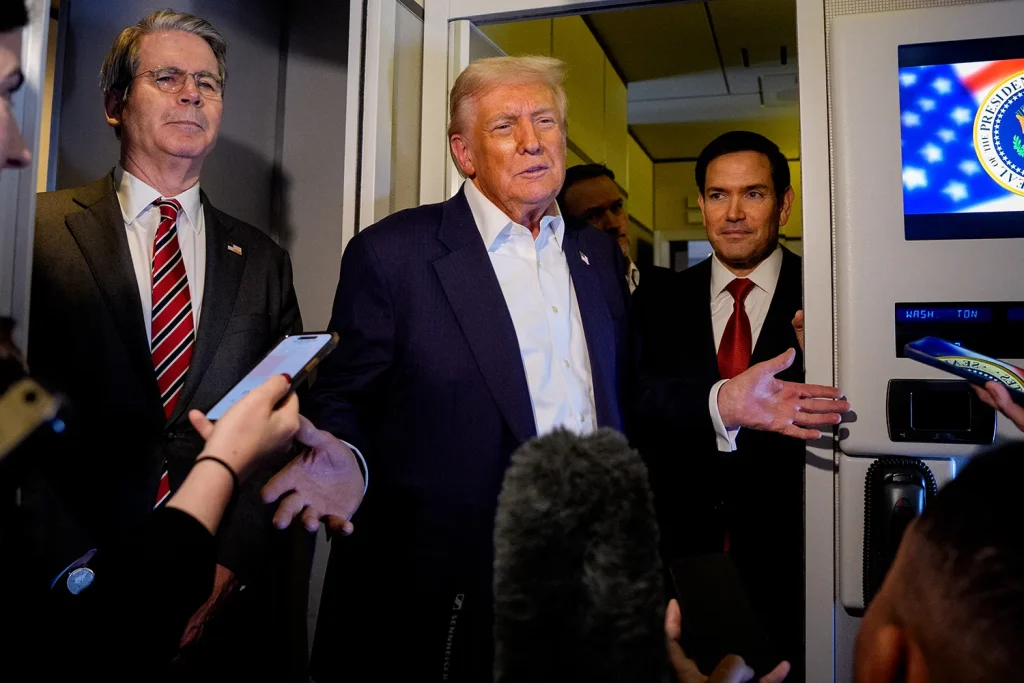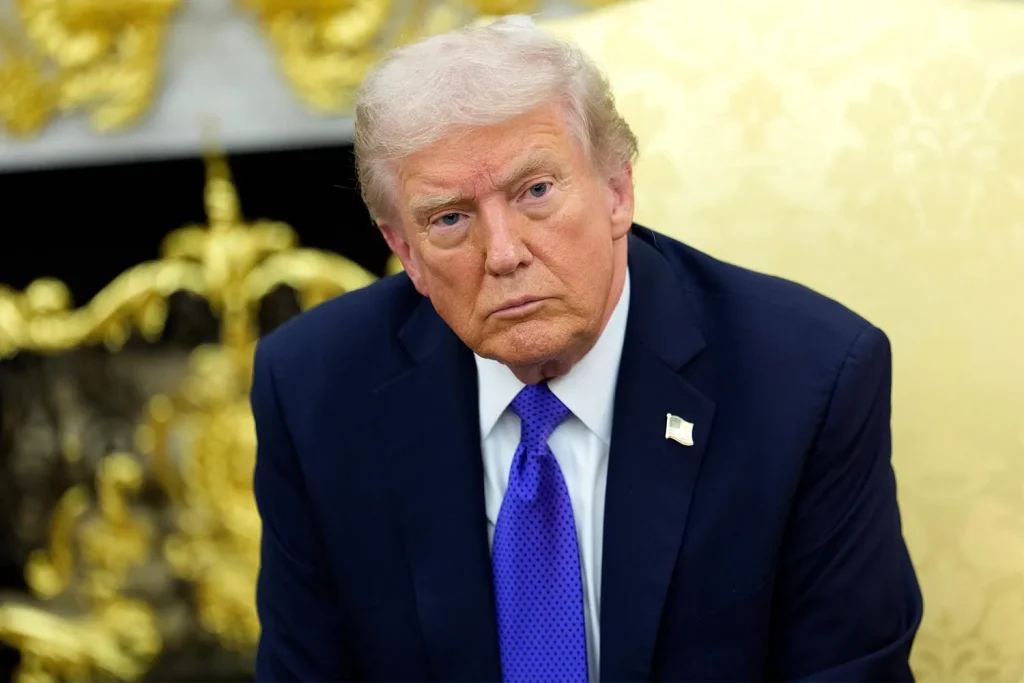New Transcript Reveals Donald Trump Personally Approved Edits to His 60 Minutes Interview, Some of Which Were Never Aired
The latest episode of “60 Minutes,” billed as a deep, behind-the-scenes conversation between President Donald Trump and veteran correspondent Norah O’Donnell, has stirred a media firestorm—not simply for the topics discussed, but for what was left on the cutting-room floor. According to a full transcript published by CBS News and analyzed by several outlets, the version of the interview broadcast on November 2, 2025 was significantly truncated. More importantly, some of the omitted segments appear to have been flagged for removal at the behest of President Trump himself—raising fresh questions about editorial control, transparency, and the relationship between a major network and the most closely watched figure in American politics.

In the 90-minute sit-down recorded at Mar-a-Lago, Trump addressed a range of hot-button issues—from U.S.-China relations and the space of nuclear deterrence, to immigration, the government shutdown and the geopolitics of crypto. But the version aired on Sunday included just 28 minutes of content. A 43-minute edit followed, and an “extended” 73-minute version was posted online, labeled still as being “condensed for clarity.”
The official transcript, made public by CBS News, shows that the omitted segments included one of the most striking moments: Trump casually telling O’Donnell, “Actually 60 Minutes paid me a lotta money. And you don’t have to put this on, because I don’t wanna embarrass you…” when discussing a $16 million settlement with CBS’s parent company, Paramount Global, over allegations of deceptively editing a 2024 interview with then-Vice President and presidential candidate Kamala Harris.
That remark was omitted from the broadcast as aired and from the 43-minute online version, though it appears in the transcript and in portions of the 73-minute version. Correspondingly, other segments not shown included Trump’s discussion of the network’s leadership (he named names, said he supported its “great new leader”), and a portion of the conversation about his pardon of cryptocurrency-exchange founder Changpeng Zhao.
From the network’s side, CBS News acknowledged that the footage released is edited, and that it had earlier settled the Harris-related case by agreeing to make future presidential-candidate interview transcripts public (without an admission of wrongdoing).
The result is a tangled narrative. On one hand, President Trump, under legal pressure and media scrutiny, forced a major network to release transcript evidence and settle a high-profile lawsuit. On the other, he appears to have interfered—or at least influenced—what is shown publicly of his own interview, prompting critics to argue that the network ceded too much editorial control.
For viewers, the meaning is layered. When a news organization advertises an interview as “full,” expectations are of unfiltered access to the subject’s pros, cons, trail of logic, awkward admits and all. Here, however, the “full interview” label appears to mask selective trimming—segments that leave out self-incriminating or highly provocative lines, omitted ostensibly not because they lacked news value, but because the subject requested their removal.
From Trump’s vantage, this becomes a dual win: he gets to sit down for a marquee network interview—always a useful stage—and he keeps certain remarks from going to the broader broadcast audience. The remark “you don’t have to put this on” is telling: it signals a negotiation, not a standard network-subject dynamic. Critics will argue that this upends the traditional editorial firewall between guest and outlet. CBS is not a willingness outlet; it is supposed to make independent decisions about what to broadcast.

More broadly, the episode raises issues of accountability and trust in broadcast journalism. If a network publicly airs only a fraction of a sit-down, and if the subject exerts pressure on omissions, then viewers are left to wonder what they are not seeing—and why. A transcript is a valuable transparency move, but if it only makes visible what was intentionally hidden, it can still be a selective gesture.
The incident also reflects the ongoing friction between Trump and the press. The earlier lawsuit against CBS over its handling of the Harris interview—where Trump claimed the network manipulated her answers to aid her campaign—resulted in CBS paying out $16 million in a settlement. That settlement included a promise that transcripts of future candidate interviews would be released, but did not require an admission of editorial malfeasance. Some press-freedom advocates say the settlement sent the wrong message: that networks can be financially coerced and editorially constrained by high-stakes lawsuits.
In one sense, the interview still functions as a news event: Trump laid out positions, stances and rhetoric as he seeks to return to the political centre stage. But the backing track to that conversation—the extraction, editing and presentation of it—adds a meta-dimension. What you see is only part of what you get. What you don’t see may be as important.
For Trump supporters, the trimming of the most explosive comments may look like censorship or selective suppression by a liberal media network. For his detractors, it may appear as a staged soft-ball: a controlled environment in which the subject still retains veto power. Either way, the trust dynamics are shaken.
If the broadcast version functions as an appetizer, the transcript is the full entrée and the omitted chunks become the hors d’oeuvres nobody served. The question now is whether networks will face mounting pressure—legal, corporate, public—to reveal what they exclude, and whether subjects of interviews will increasingly insist on line-item oversight of what airs. In this sense, the CBS-Trump episode may mark a turning point in the broadcast-news ecosystem: the guest isn’t just a speaker in front of the camera but a negotiator behind the scenes.
In his public remarks after the interview, Trump emphasized that the U.S. must keep pace in the crypto industry, defended his positions on immigration and border control, reiterated his claim that the 2020 election was “rigged,” and suggested strong federal action in cities with crime troubles. But those remarks unfolded in a partial context—some key follow-up questions and candid moments did not make the main cut. That leaves media analysts saying the audience was given a curated version.
Trust in broadcast journalism relies not only on what is covered, but how reliably the audience believes it has seen the full version of a major conversation. When major elements are withheld or subject to pre-air negotiation, the credibility risk rises—not just for the network, but for the institution of televised political journalism.
For viewers trying to make sense of the substance, the underlying message might be: judge what is said, but remain aware there may be more un-said. And for news organisations, the takeaway is that high-profile interviews are no longer just about scheduling, access and questions—but also about courtroom-style control over what the world sees.
In the end, the interview succeeds in part for what it reveals—and fails in part for what it conceals. The moment “you don’t have to put this on because I don’t want to embarrass you” may become the most revealing line of all.


